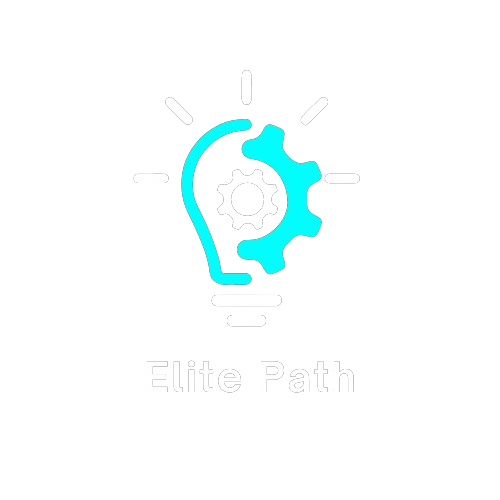What Is a Setter Closer and How the Model Operates
The setter closer model is transforming how modern sales teams drive revenue, especially in high ticket environments. This two-person sales strategy separates the lead generation and qualification process (handled by the “setter”) from the actual closing of the deal (managed by the “closer”). This system is built to boost focus and precision, with each role laser-focused on its specific phase in the sales pipeline.
A setter is responsible for initiating contact with potential clients, qualifying their needs, and booking them for a deeper sales conversation. These initial interactions may happen through cold calls, emails, or social media outreach. The setter gathers relevant information and preps the prospect for the closer.
The closer steps in after the lead has been qualified and nurtured. Their job is to assess the final fit, present the offer, handle objections, and secure the sale. This dual-role approach enables both team members to perform optimally by focusing on what they do best.
This model is especially effective in high ticket sales, coaching programs, consulting services, SaaS, and other industries where buying decisions involve trust and a strong value proposition. Companies that use the setter closer framework benefit from a streamlined process that reduces wasted effort and shortens the sales cycle.
Why the Setter Closer Framework Boosts Sales Efficiency
When a sales team uses the setter closer model, productivity often climbs quickly. That’s because it eliminates the multitasking trap that plagues many traditional sales setups. A setter can dedicate their energy to consistently filling the pipeline with qualified leads. This helps maintain a predictable flow of sales opportunities for the closer.
By removing the pressure of prospecting, the closer can give full attention to perfecting their conversion strategy. This means more time is spent tailoring the pitch, addressing objections, and focusing on the psychology of the buyer.
With this model, sales reps spend less time chasing the wrong people. Setters are trained to qualify leads based on criteria such as interest level, budget, authority, and need. This ensures that only highly interested prospects move forward in the funnel.
The division of labor also encourages faster responses and follow-ups. Since setters are always focused on outreach, they can quickly re-engage missed leads or warm up cold contacts. Meanwhile, closers can provide more personalized consultations without worrying about where the next lead is coming from.
When both roles are aligned, performance metrics soar. This structure often leads to better forecasting, reduced burnout, and more accountability across the team.
Key Skills Needed for a Successful Setter Closer Team
For a setter closer team to succeed, each member needs a specific skill set. A strong setter thrives on conversation and curiosity. They’re great at building rapport quickly, asking strategic questions, and identifying buying signals. Setters also need to be organized and consistent in using CRM tools, tracking leads, and scheduling appointments.
Closers, on the other hand, need a deep understanding of consultative selling. They must be excellent listeners and able to adapt their pitch based on the prospect’s emotional triggers and objections. The best closers don’t just push for the sale—they uncover the root problem and present the offer as a solution that can’t be ignored.
Both setters and closers need a strong communication loop. This means quick updates, feedback on lead quality, and shared data to refine their process. It also helps to have mutual respect for each other’s roles—both are essential to the final sale.
Using the right technology can also make a big difference. Tools like pipeline management software, call recording apps, and AI-assisted scheduling platforms help automate routine tasks and keep both setter and closer focused on what they do best.
Common Challenges of the Setter Closer Model and How to Overcome Them
While effective, the setter closer strategy can face roadblocks if not managed properly. One common issue is misalignment between the two roles. If the setter books leads that are not fully qualified, the closer’s performance suffers, and the trust between roles weakens.
Timing is another hurdle. A lead might be red-hot when booked but grow cold if there’s too much delay before the closer follows up. This highlights the need for clear hand-off processes and scheduling systems that keep things tight.
Poor data sharing can also create confusion. Setters may neglect to input key insights into the CRM, leaving the closer unprepared for their call. To avoid this, it’s essential to build systems for thorough note-taking and daily syncs.
Silos can form between setters and closers if communication is lacking. Teams that win with this model often hold joint training sessions, share recordings, and coach each other to improve both stages of the sales journey.
Setting clear metrics helps avoid friction. Key performance indicators like show-up rate, lead-to-close ratio, and follow-up speed should be tracked consistently. With a focus on transparency, issues can be corrected before they grow into larger problems.
How Businesses Can Implement the Setter Closer Strategy
Adopting the setter closer model starts with evaluating your sales process. If your team handles high ticket items or complex services, separating prospecting from closing can produce immediate benefits. Begin by mapping your sales funnel and identifying where leads drop off or go cold.
Next, decide whether to build your team in-house or outsource the roles. Many businesses choose to work with remote setters and closers, allowing for global talent and extended time coverage. Others prefer hiring internally to maintain tighter control over the process.
Compensation structures also matter. Setters may receive a base pay plus bonuses based on appointments that show up or convert. Closers often work on commission, which motivates them to maintain high conversion rates.
Training plays a big role in long-term success. Create scripts, objection-handling frameworks, and qualification checklists to ensure consistency. Both roles should be coached regularly to keep skills sharp and aligned with company goals.
Finally, monitor results and adjust as needed. The best setter closer teams treat the system like a machine—tuned and optimized constantly.
Why the Setter Closer Model Thrives in High Ticket Sales
When it comes to high ticket sales, the setter closer system is especially powerful. These transactions usually involve larger financial commitments and longer decision-making cycles. A one-call close is rare. That’s where the setter shines—warming up leads, building familiarity, and making prospects feel heard before they meet the closer.
By the time the closer steps in, the groundwork has been laid. They’re not pitching cold. Instead, they’re offering a customized solution to someone already invested in the conversation. This reduces pressure on both sides and improves buyer confidence.
Setters also allow businesses to scale faster. Instead of the closer spending time hunting for leads, they’re focused on the most valuable task: closing sales. This is crucial for high ticket businesses that want to maximize return on time.
Additionally, this model helps filter out unqualified prospects early, saving the closer from wasting time on dead-end conversations. It increases the odds that every sales call leads to a win—or at least a high-value interaction that could convert later.
The setter closer method thrives because it aligns with how people buy—through trust, education, and a sense of support throughout the decision-making process.
Frequently Asked Questions About the Setter Closer Model
Q1: Can one person act as both setter and closer?
Yes, but it depends on the volume and complexity of your sales. For small teams or simpler products, a hybrid role might work. However, splitting the roles allows for greater specialization and efficiency, especially in high ticket environments.
Q2: How do I know if my business needs a setter closer team?
If you’re selling products or services over $1,000 and your sales cycle involves multiple touchpoints, the setter closer model could improve conversion and team performance. It’s also a strong fit for online coaching, digital services, and B2B consulting.
Q3: What tools or platforms support setter closer workflows?
CRM tools like HubSpot, Close.io, or GoHighLevel are popular. Calendly for scheduling, Slack for internal communication, and Google Sheets for tracking can also be useful. Some sales teams use AI tools for prospect scoring and outreach automation.
Q4: How do you measure success for each role?
Setters are measured by qualified bookings, show-up rates, and lead quality. Closers are evaluated on conversion rate, revenue generated, and feedback from clients. When both roles hit their KPIs, the system works smoothly.
Q5: What’s the difference between a sales development rep (SDR) and a setter?
While similar, a setter often works in high ticket or remote sales and focuses heavily on appointment setting and pre-qualifying. An SDR might also nurture leads and push for a sale. The main difference lies in specialization and the nature of the product or service being sold.











